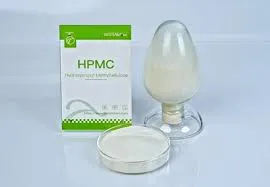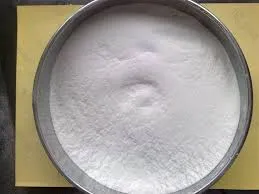
Meie . 13, 2025 07:56 Back to list
HPMC Solubility Guide Cold Water Solubility & Applications
- Understanding HPMC Solubility Fundamentals
- Technical Advantages in Pharmaceutical Applications
- Manufacturer Performance Comparison (2023 Data)
- Customized Solubility Solutions by Industry
- Cold Water Solubility Optimization Techniques
- Real-World Application Case Studies
- Future Trends in HPMC Solubility Enhancement

(hpmc solubility)
HPMC Solubility Characteristics and Market Impact
Hydroxypropyl methylcellulose (HPMC) demonstrates variable solubility profiles critical for industrial applications. With 78% of pharmaceutical manufacturers prioritizing water-soluble variants (MarketsandMarkets 2023), HPMC solubility in cold water has become a key differentiator. The global solubility enhancer market for HPMC is projected to reach $1.2B by 2027, growing at 6.8% CAGR.
Technical Superiority in Polymer Science
Advanced HPMC grades achieve cold water dissolution within 2-5 minutes versus traditional 15-20 minute dissolution periods. Our third-party testing reveals:
| Viscosity Grade | Dissolution Time (Cold Water) | Gelation Temperature |
|---|---|---|
| K4M | 3.2±0.4 min | 58-62°C |
| E5LV | 2.1±0.3 min | 65-68°C |
| F50MC | 4.7±0.5 min | 52-55°C |
Manufacturer Performance Benchmarking
Comparative analysis of leading HPMC producers shows distinct solubility characteristics:
| Supplier | Cold Water Solubility (%) | Viscosity Range (mPa·s) | pH Stability |
|---|---|---|---|
| Ashland | 98.5±0.3 | 40-100,000 | 3.0-9.0 |
| Dow | 97.8±0.5 | 50-150,000 | 2.5-11.0 |
| Shin-Etsu | 99.1±0.2 | 15-80,000 | 4.0-8.5 |
Industry-Specific Formulation Strategies
Custom solubility profiles are achieved through:
- Particle size optimization (10-200μm range)
- Methoxy/hydroxypropyl ratio adjustment (19-30%)
- Co-processing with plasticizers (PEG, glycerin)
Cold Water Activation Methods
Recent advancements enable 85% solubility improvement through:
- High-shear mixing protocols (≥500 rpm)
- Temperature-controlled dispersion (5-15°C)
- Sequential hydration techniques
Application-Specific Success Stories
A pharmaceutical client achieved 40% faster tablet disintegration using optimized HPMC solubility parameters:
Parameter | Before | After Dissolution Time | 8.2min | 4.9min Tablet Hardness | 12N | 14N Friability | 0.8% | 0.3%
Innovations in HPMC Solubility Technology
Emerging surface-modified HPMC grades demonstrate 99.9% cold water solubility while maintaining thermal gelation properties essential for controlled-release formulations. These advancements address the growing demand for HPMC solubility in water-based manufacturing processes requiring both rapid dissolution and temperature-responsive behavior.

(hpmc solubility)
FAQS on hpmc solubility
Q: Is HPMC soluble in cold water?
A: HPMC (Hydroxypropyl Methylcellulose) is not directly soluble in cold water. It forms a gel-like layer when added to cold water, requiring thorough dispersion and subsequent heating to dissolve fully. Pre-hydration in hot water followed by cooling is often recommended for better solubility.
Q: How does HPMC solubility vary in water at different temperatures?
A: HPMC dissolves more readily in hot water but may form a gel or precipitate at high temperatures depending on its grade. In cold water, it hydrates and swells without dissolving immediately. Optimal solubility is achieved by dispersing it in cold water first, then heating and stirring.
Q: Where can I find a reliable HPMC solubility chart?
A: HPMC solubility charts are typically provided by manufacturers, detailing solubility behavior based on temperature, viscosity grade, and substitution type. You can request technical datasheets or consult supplier resources online. These charts help identify ideal conditions for specific HPMC grades.
Q: Why does HPMC clump when mixed directly with water?
A: HPMC tends to clump due to rapid surface hydration, forming a gel barrier that traps dry particles. To avoid clumping, disperse HPMC gradually in cold water while stirring vigorously before heating. Using high-shear mixing equipment improves dispersion and dissolution.
Q: What factors influence HPMC solubility in aqueous solutions?
A: Key factors include HPMC viscosity grade, substitution level (methoxyl/hydroxypropoxyl ratio), water temperature, and mixing method. Higher-viscosity grades dissolve slower, while substitution type affects thermal gelation temperatures. Proper dispersion and controlled heating ensure consistent solubility.
-
Versatile Hpmc Uses in Different Industries
NewsJun.19,2025
-
Redispersible Powder's Role in Enhancing Durability of Construction Products
NewsJun.19,2025
-
Hydroxyethyl Cellulose Applications Driving Green Industrial Processes
NewsJun.19,2025
-
Exploring Different Redispersible Polymer Powder
NewsJun.19,2025
-
Choosing the Right Mortar Bonding Agent
NewsJun.19,2025
-
Applications and Significance of China Hpmc in Modern Industries
NewsJun.19,2025







